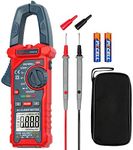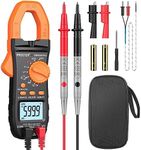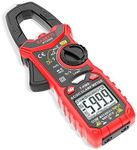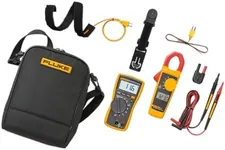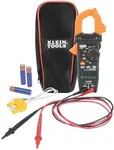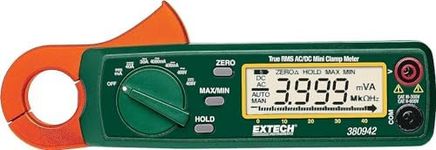Buying Guide for the Best Clamp Meters
Choosing the right clamp meter can make electrical measurements safer and more convenient, especially if you often work with live wires or need to measure current without disconnecting circuits. The best approach is to think about the types of measurements you need, the environments you'll be working in, and the level of accuracy required for your tasks. Understanding the key specifications will help you match a clamp meter to your needs, ensuring both safety and efficiency.Current Measurement RangeThe current measurement range tells you the minimum and maximum current the clamp meter can accurately measure. This is important because using a meter outside its range can give inaccurate readings or even damage the device. Clamp meters typically come in ranges like 0-400A, 0-600A, or even higher. If you mostly work with household appliances or small circuits, a lower range is usually sufficient and can offer better accuracy at low currents. For industrial or commercial work where you might encounter higher currents, a higher range is necessary. Think about the highest current you expect to measure and choose a meter that covers that value comfortably.
AC/DC Measurement CapabilitySome clamp meters can measure only AC (alternating current), while others can measure both AC and DC (direct current). This matters because certain applications, like automotive work or solar panel systems, require DC measurement. If you only need to check standard household or building wiring, AC-only might be enough. However, if you plan to work with batteries, electric vehicles, or renewable energy systems, make sure your clamp meter can handle both AC and DC.
Resolution and AccuracyResolution refers to the smallest change in current the meter can detect, while accuracy tells you how close the reading is to the actual value. Higher resolution and accuracy are important if you need precise measurements, such as in troubleshooting sensitive electronics or verifying compliance with standards. For general electrical work, standard accuracy is usually sufficient, but if your tasks demand precision, look for meters with higher accuracy ratings and finer resolution.
Jaw Opening SizeThe jaw opening size determines the maximum diameter of the conductor the clamp can fit around. This is important if you work with thick cables or need to measure bundled wires. Smaller jaws are fine for household wiring, but for industrial settings or large power cables, a larger jaw opening is necessary. Consider the size of the wires you typically encounter and choose a clamp meter with jaws that can easily fit around them.
Additional Measurement FunctionsMany clamp meters offer extra features like voltage measurement, resistance, continuity, temperature, or even frequency. These can be useful if you want a versatile tool that can handle multiple tasks. If you only need to measure current, a basic model will do, but if you want to reduce the number of tools you carry, look for a clamp meter with the additional functions you’ll actually use.
Safety Ratings (CAT Ratings)Clamp meters are rated for safety according to categories like CAT II, CAT III, or CAT IV, which indicate the types of electrical environments they can safely be used in. Higher CAT ratings mean the meter is designed to handle more dangerous environments, such as industrial power distribution. If you’re working in a home or office, a lower CAT rating is usually fine, but for commercial or industrial work, a higher rating is essential for your safety.
Display Type and BacklightThe display type affects how easy it is to read measurements, especially in dimly lit areas. Some clamp meters have large, clear displays with backlighting, which is helpful if you often work in dark or cramped spaces. If you expect to use the meter in various lighting conditions, a backlit display can make your work much easier and reduce the chance of misreading values.
